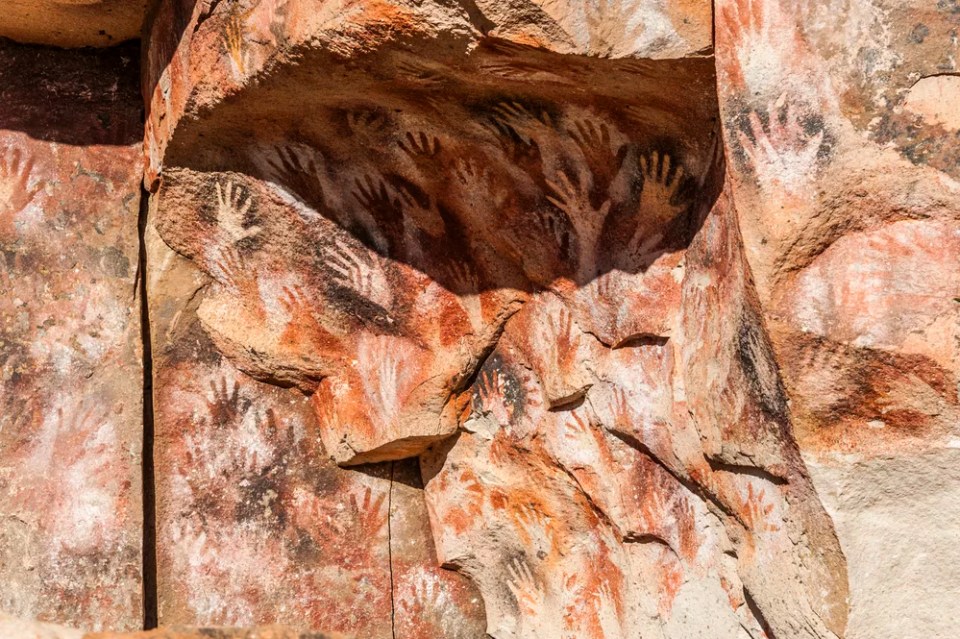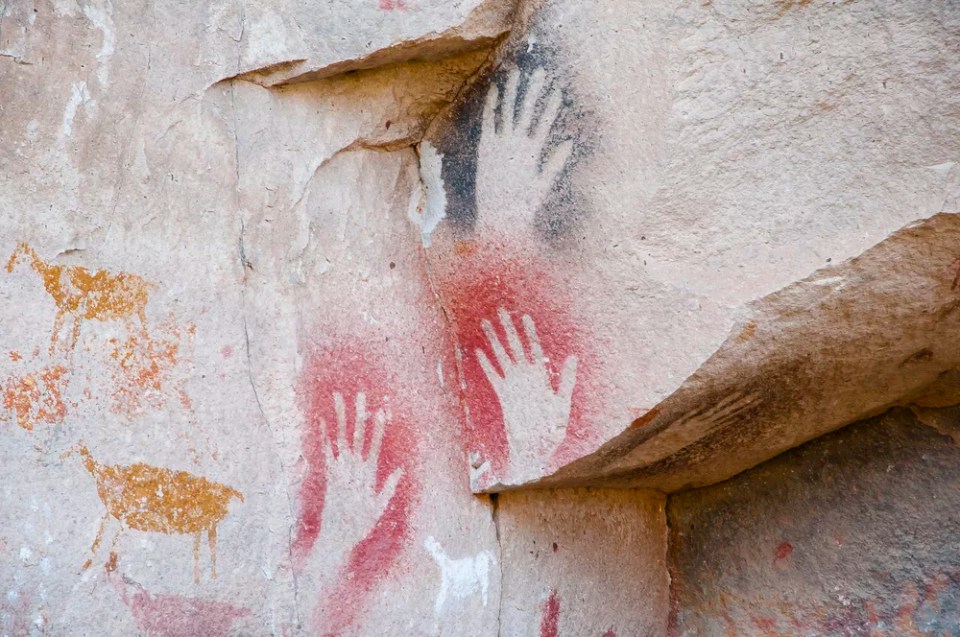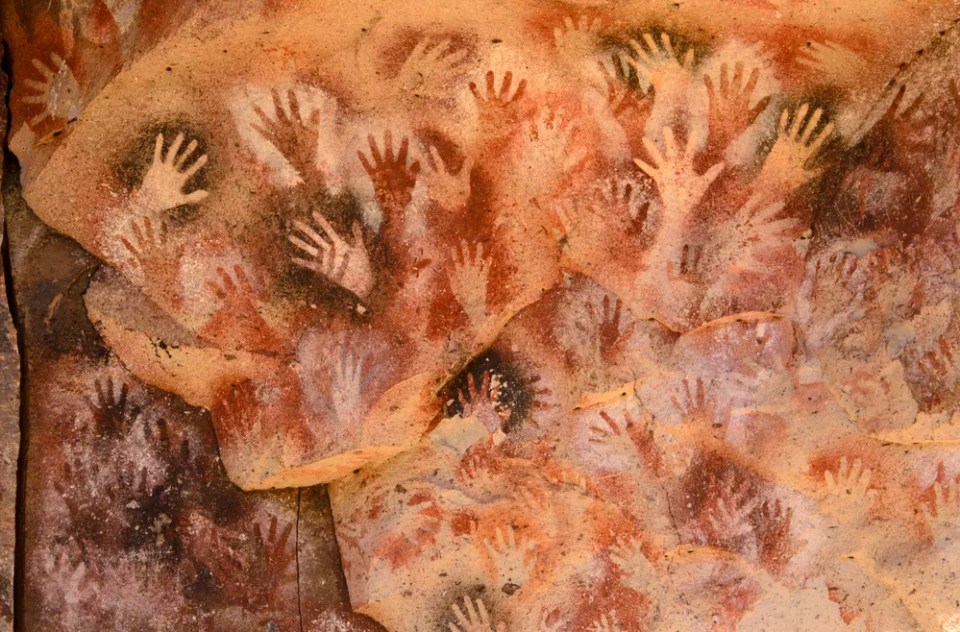Photo by depositphotos.com
In Santa Cruz, Argentina, there is a cave adorned with hundreds of outlines of hands stenciled on its walls. Though the stenciled hands appear surprisingly modern, some of the artwork is nearly 10,000 years old. Cueva de las Manos—or the Cave of Hands—served as a meeting place for bands of hunter-gatherers for several centuries. Since becoming a designated UNESCO World Heritage Site in 1999, the cave has emerged as one of Argentina’s most popular attractions.
Cueva de las Manos features stenciled hands, depictions of hunters pursuing animals such as pumas, llamas, and birds, as well as geometric shapes, stick figures, and drawings of the sun. Historians remain uncertain about what motivated ancient people to stencil their hands on the walls of Cueva de las Manos. One of the most popular theories suggests that the stenciled hands were part of a shamanistic ritual, the significance of which has been lost to time.

Paintings of ancient people in the Cave of the Hands (Spanish: Cueva de las Manos), Patagonia, Argentina
Photo by depositphotos.com
The ancient inhabitants of the area near Cueva de las Manos utilized mineral pigments such as manganese oxide and bone pipes to create the stencils on the cave walls. From a distance, the stenciled hands could be mistaken for creations of modern spray paint. Archaeologists have documented over 2,000 handprints inside and near the cave, some of which appear to be missing fingers. It remains unclear whether this was due to natural deformities or if it represents an attempt to convey a message using a primitive form of sign language.

Photo by depositphotos.com
Cueva de las Manos is located near Rio Pinturas—or the Painted River—in the breathtakingly beautiful region of Patagonia. Rio Pinturas remains home to the same species of llamas, pumas, and birds that the hunter-gatherers depicted on the walls of Cueva de las Manos. The stark, arid hills and mountains, punctuated by lush green plants growing alongside the Pinturas River, create a picturesque landscape well worth exploring. Given the remoteness of Rio Pinturas, visitors are advised to bring a reliable map, a stable GPS, and ample food and water.
Despite decades of study, historians and archaeologists have yet to unravel the mystery of what the ancient people who frequented Cueva de las Manos were trying to communicate. Visiting the site might be the best way to ponder this…
Click Here to Read the Full Original Article at Unusual Places…
